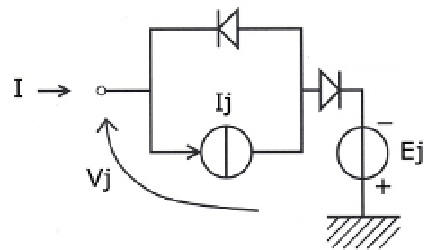Information Technology Reference
In-Depth Information
transportation network where the center of mass of each cell is located. The values of the
currents (clients) are expressed in terms of the number of vehicles per hour (veh/h). They
account for both the time distribution and the socioeconomic features of the clients
population, this through a parameter related to the “appeal” of each facility. Note that with
the term facility “appeal”, author means the capability that a certain type of facility has to
attract the clients' population. Data relevant to this capability can be acquired from national
statistical studies centers (for instance, CENSIS). Generally, the available data provide the
number of families attracted by the considered facility type, the number of persons for
family unit, their distribution over the territory.
From the modeling point of view, each facility, regarded as incapacitated, is described by
setting at a null potential the corresponding node where it is assumed to be located. The
usage intensity of the considered facility is given by the sum of the currents entering such a
node.
In alternative, as long as the facility has a limited capacity
C
j
(in clients/hour), the node
where the facility is placed is not directly put to mass, but its connection to the null potential
level is that depicted in Figure 2, where
V
j
is equal to zero until
I
j
≤C
j
, that is up to the facility
saturation.
Fig. 2. The electric equivalent of a capacitated facility located in the j-th node
As soon as
I
j
>C
j
, the diode is cut-off and
V
j
increases, practically re-distributing the clients
among the other facilities, while keeping
I
j
=C
j
. It is worth noting how this electrical effect
resembles a waiting-in-queue time. More precisely, the queuing time of the j-th facility is
modelled by the potential
V
j
.
Ej
and the diode connected to it represent the facility appeal, measured as the extra-time the
client accepts to spend to reach the service because of its appeal level, determined by
statistical evaluation of fuzzy decision techniques (Lee and Zadeh, 1969) on clients'
opinions.
3.4 Network solution
Given the parameters
E
ij
and
R
ij
for any link of the electric network representing the
transportation network as a function of the operating point and of the dependence of the
travel time on the traffic intensity, specified, in each node, the magnitude of the current
generators modelling the clients population, and, finally, chosen a feasible location of the
considered facilities, then, solving the network means to determine:
-
the voltage at each node on the basis of which it is possible to quantify the access times,
the border lines and the consequent partition of the network nodes which identifies the
influence areas of each facility. Note that the facility access time is given by the


Search WWH ::

Custom Search